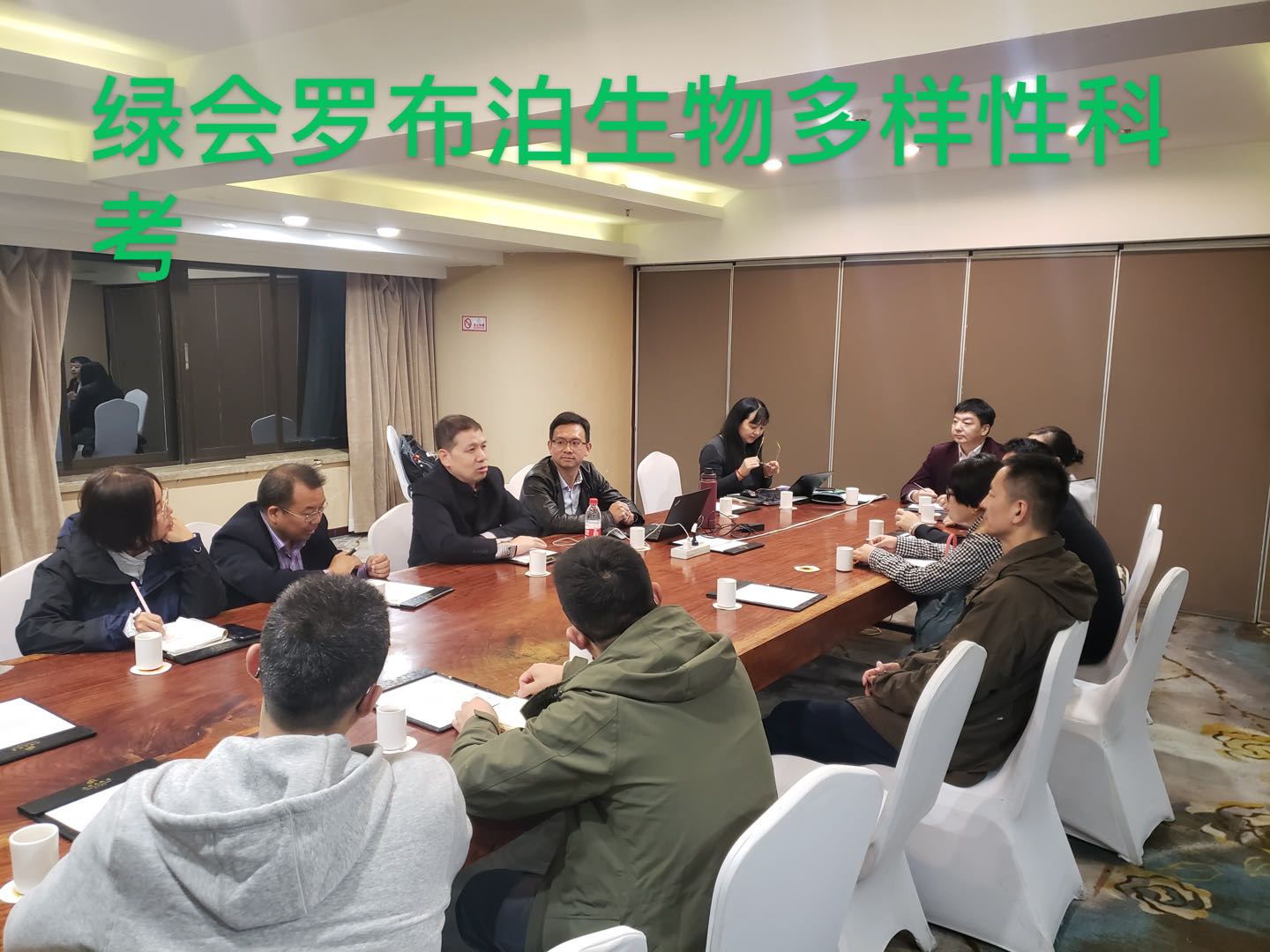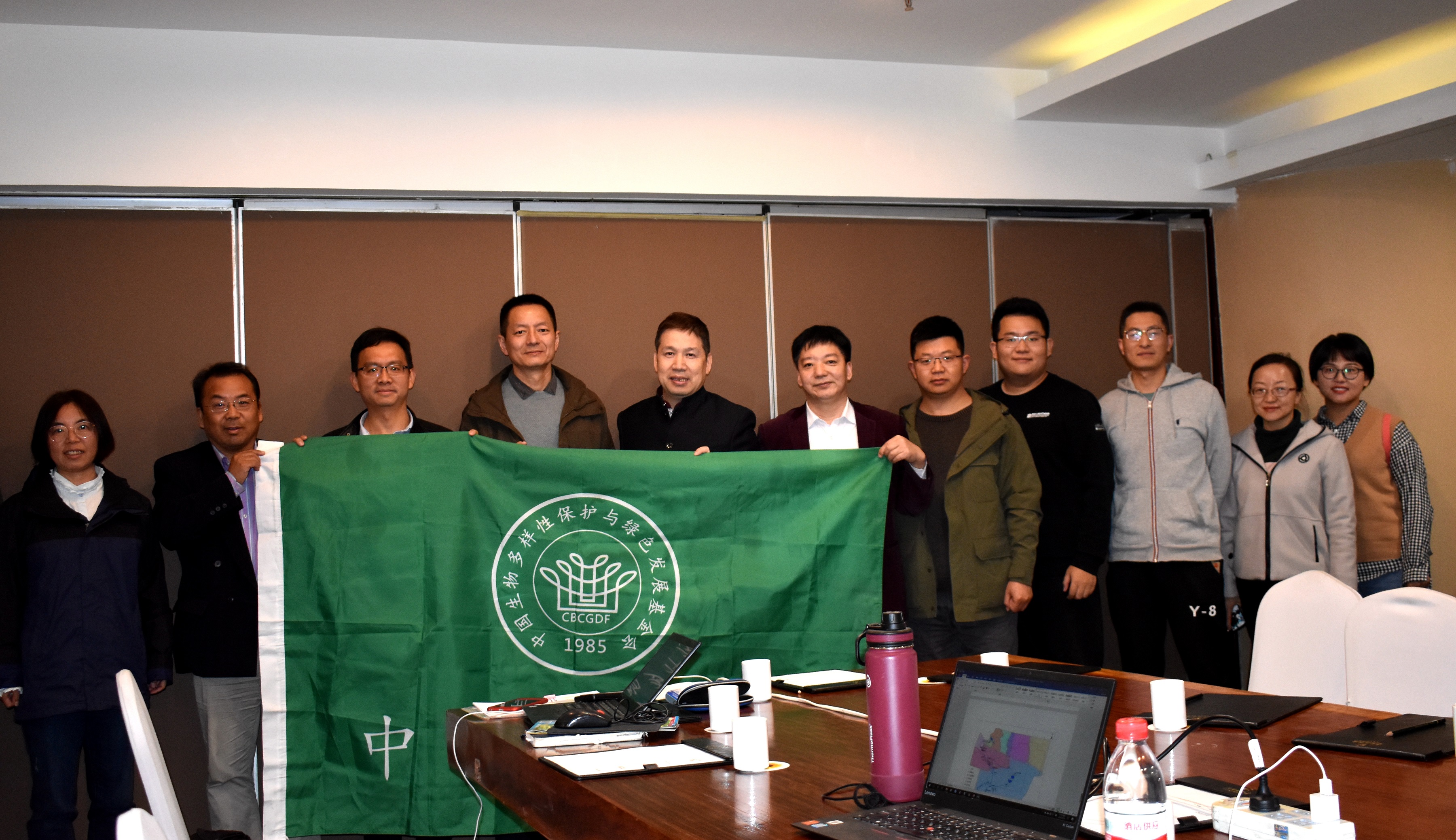On October 9th, the last day of the Mid-Autumn Festival and National Day holiday, the Lop Nur scientific investigation led by China Biodiversity Conservation and Green Development Foundation (CBCGDF) was officially launched. The four expedition teams departed from Beijing, Shanghai, Guangzhou, and Wuhan and met in Urumqi. In the afternoon of the arriving day, the team members conducted exchanges around the first phase of the expedition itinerary and tasks.
Zhou Jinfeng, the Secretary-General of CBCGDF first expressed his gratitude to the various scientific expedition teams for coming to participate in the scientific expedition. He then introduced the reasons for initiating and organizing the ten-year Lop Nur scientific expedition project.
Dr. Zhou introduced that when the CBCGDF was conducting desertification studies in the Zhuonai Lake Basin of Hoh Xil in the source of the Yangtze River on the Qinghai-Tibet Plateau, Aerospace Information Research Institute, Chinese Academy of Sciences, through satellite remote sensing data for nearly 40 years, found that under the background of global warming and humidification, the water volume of Zhuonai Lake and several lakes in its lower reaches has increased significantly, and the lake water has risen significantly. The main reason for the changes in the river and lake water system in the region is the increase in regional precipitation. He said: “Lop Nur is also a huge lake in history. In recent years, the entire Northwest has also been in the process of humidification. The water volume of the rivers and lakes in the upper reaches of the Lop Nur basin has also increased significantly. Will this bring similar changes to Lop Nur?” In the context of climate change, exploring the possibility of the transitional changes in the ecological environment of Lop Nur, driven by this idea, finally led to the first phase of scientific investigation of the biodiversity and hydrology of Lop Nur in 2020.
Dr. Zhou said: "Scientific research has shown that since 2000, precipitation in central and western regions of China has increased significantly, such as Gansu, Xinjiang, Tibet and other places. The previously barren hills in many places have turned green, and some areas are dormant. The seeds are re-germinating and the ecosystem is undergoing rapid changes. These changes are very important to the future development of the western region." He is full of expectations for the ten-year scientific research project in Lop Nur, and very much hopes that the scientific expedition team can conduct in-depth research on the evolution of the ecological environment in this area of Lop Nur, and use it as a classic case in the context of climate change for continuous research. The process of interaction between human activities and ecosystems in the country is clarified, and adaptation strategies and recommendations are proposed for the use of opportunities created by climate change, as well as the optimization and improvement of production and lifestyles in the region.
The relevant person in charge from Lop Nur Wild Camel National Nature Reserve said in the exchange that, as the last catchment basin of the Kongque River, Tarim River, Qiemo River (Cherchen River) and other rivers, Lop Nur dried up completely in 1970. The use of a series of water along the river is closely related. Since 2000, the Tarim River Basin Administration has transferred water from the Kongque River to the downstream every year, so that the dry state of the downstream has been slowed down. In addition, the water flow of the Cherchen River has increased significantly in recent years, and the water here has begun to be abundant. The person in charge said: “After 2000, a road that passed through the reserve has almost become a streamer on the water during the high-water season in summer. Now there is water throughout the year, and the vegetation nearby has begun to recover.” Now along Ruoqiang County towards Korla, some small oasis can be seen newly formed. In Taitema Lake, after the water volume increased, people started boating again, and fishermen appeared on the shore. The person in charge said: "This was unimaginable fifty years ago."
In terms of the route of this scientific expedition, the team leader Dr. Lu Shanlong from Aerospace Information Research Institute, Chinese Academy of Sciences gave an overall introduction. At the same time, Lop Nur Wild Camel National Nature Reserve, local community organizations in Xinjiang, and the plant group, terrestrial vertebrate group, aquatic organism group, soil group and microbial investigation group of the scientific research team respectively put forward suggestions and needs. After discussion, everyone determined the final scientific investigation route and schedule. In accordance with the overall plan of Lop Nur's biodiversity and hydro-ecological scientific investigation, the first phase of the Lop Nur scientific investigation in 2020 will mainly focus on the investigation and data collection of the biological diversity of the Lop Nur area and the ecological status of rivers and lakes.




(Photo credit: CBCGDF)
Original Chinese article:
http://www.cbcgdf.org/NewsShow/4854/14043.html
By / Maggie
https://www.paypal.me/CBCGDFChina
http://www.cbcgdf.org/English/ConfirmDonaTion/0.html


(Please indicate "I read CBCGDF" in the payment notes, thank you!)
